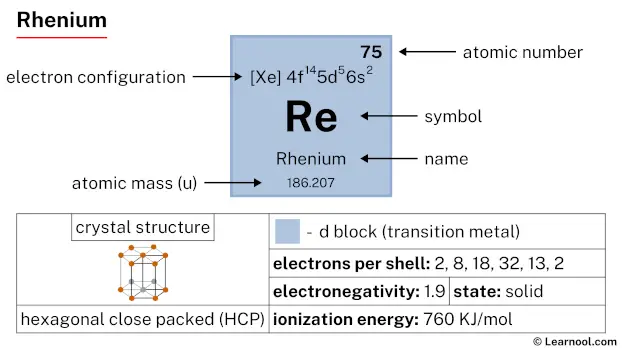
Rhenium (Re) is a chemical element of the periodic table, located in the group 7 and the period 6, and has the atomic number 75. It is a rare, lustrous, silvery-white transition metal, whose name comes from the Latin word “Rhenus”, which means the Rhine. It has the highest melting point and boiling point of all metals.
On periodic table
| group | ⇨ | 1 | 2 | 3 | 4 | 5 | 6 | 7 | 8 | 9 | 10 | 11 | 12 | 13 | 14 | 15 | 16 | 17 | 18 |
| period | ⇩ | ||||||||||||||||||
| 1 | 1 H 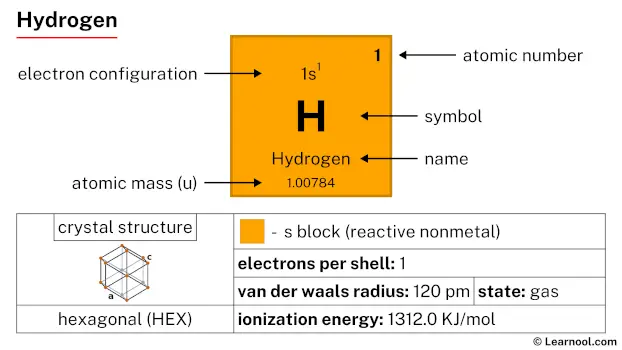 Hydrogen |
2 He  Helium |
|||||||||||||||||
| 2 | 3 Li  Lithium |
4 Be 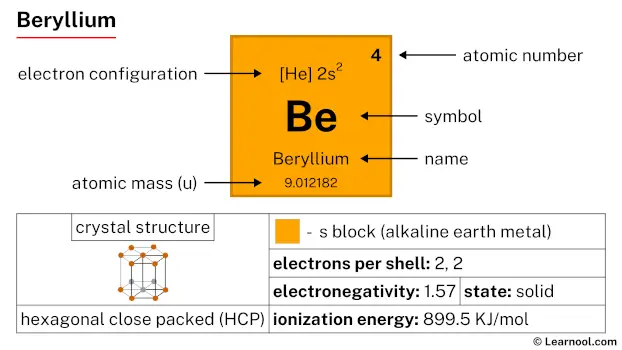 Beryllium |
5 B 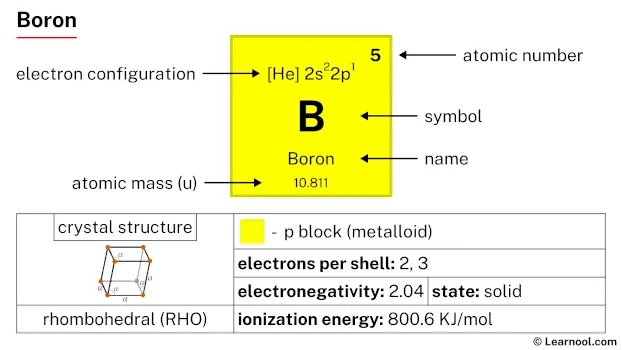 Boron |
6 C  Carbon |
7 N 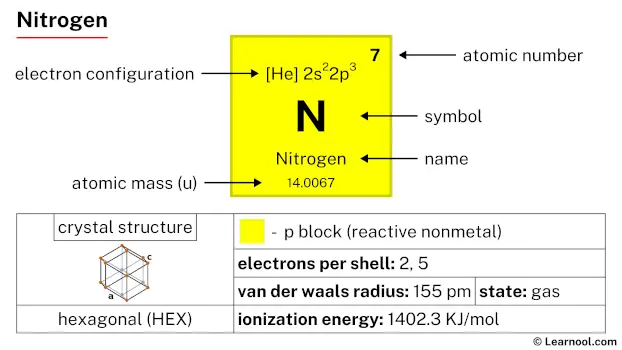 Nitrogen |
8 O 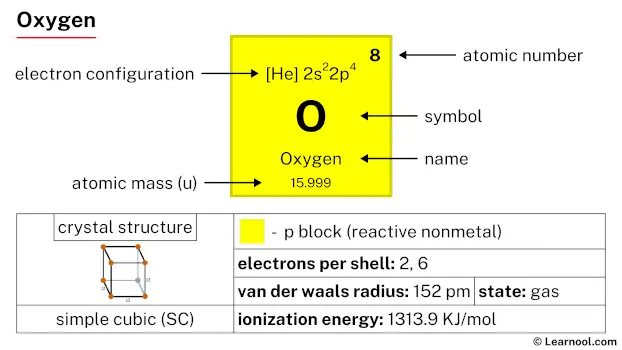 Oxygen |
9 F 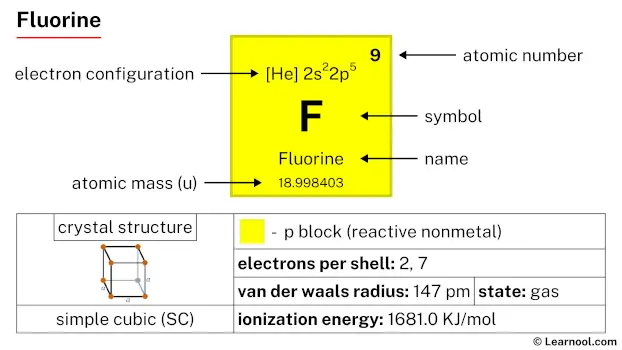 Fluorine |
10 Ne 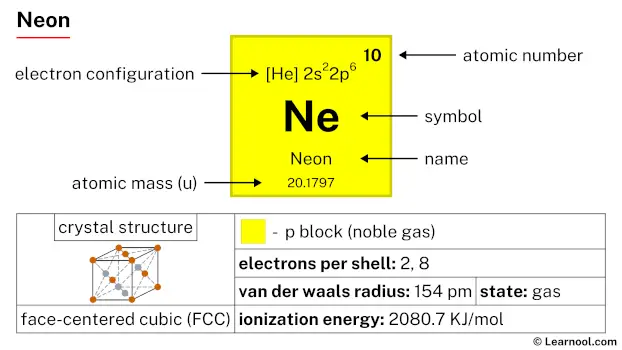 Neon |
|||||||||||
| 3 | 11 Na 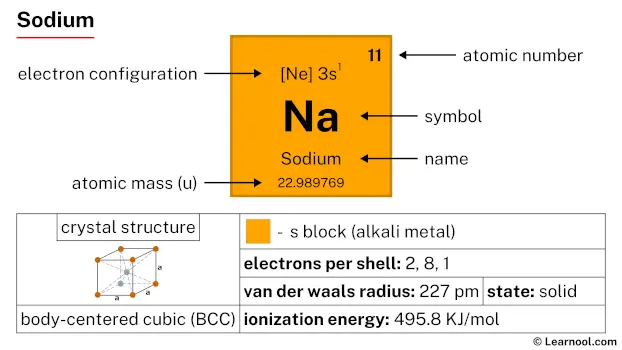 Sodium |
12 Mg 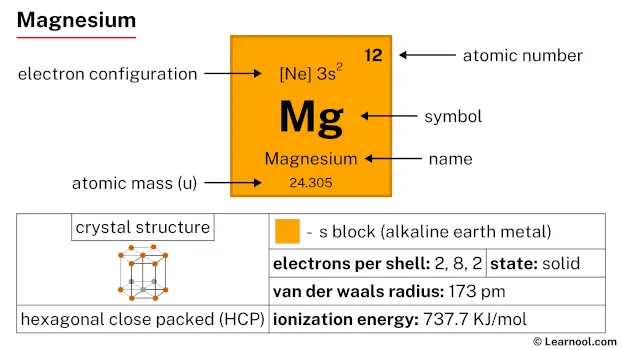 Magnesium |
13 Al  Aluminium |
14 Si Silicon |
15 P 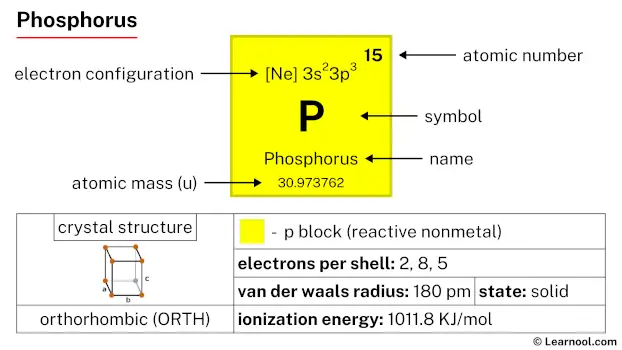 Phosphorus |
16 S 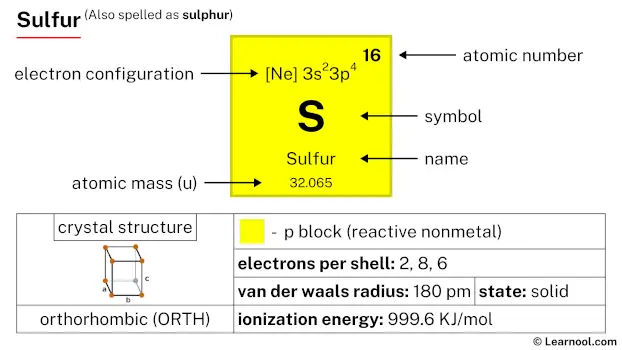 Sulfur |
17 Cl 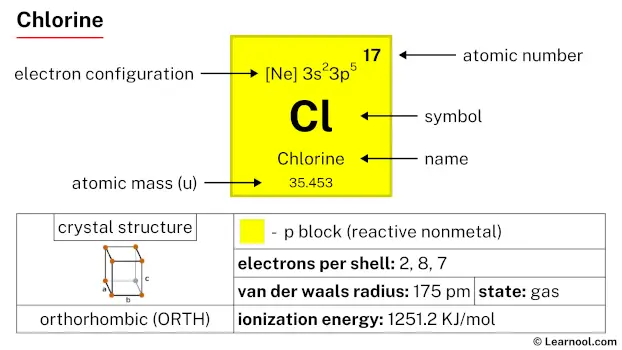 Chlorine |
18 Ar 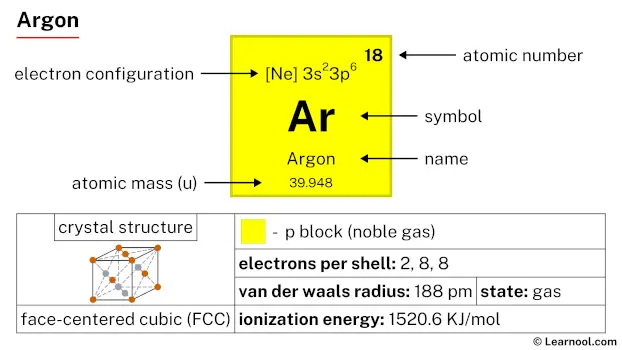 Argon |
|||||||||||
| 4 | 19 K 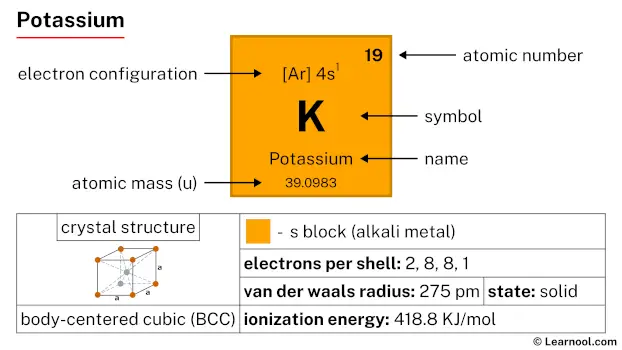 Potassium |
20 Ca 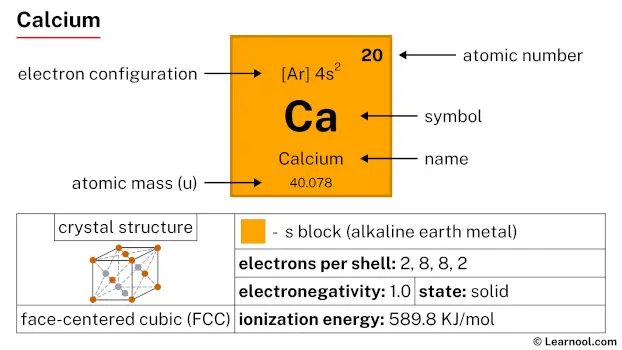 Calcium |
21 Sc 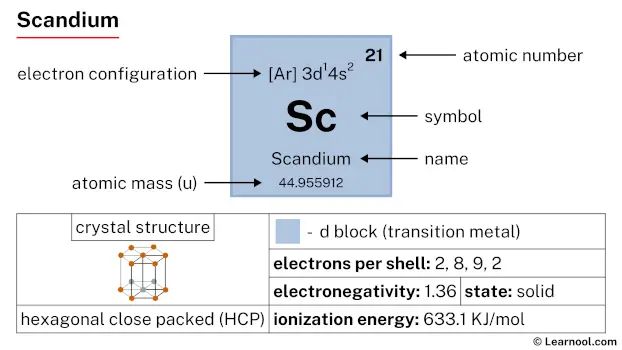 Scandium |
22 Ti 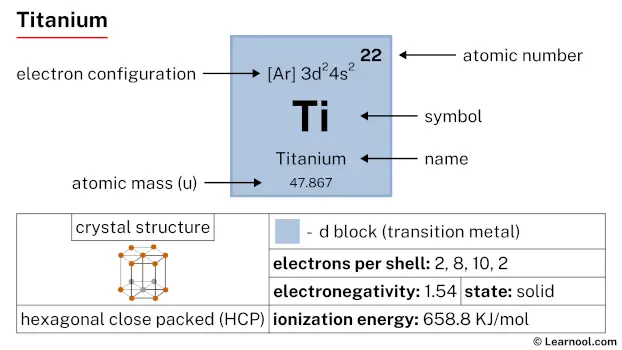 Titanium |
23 V 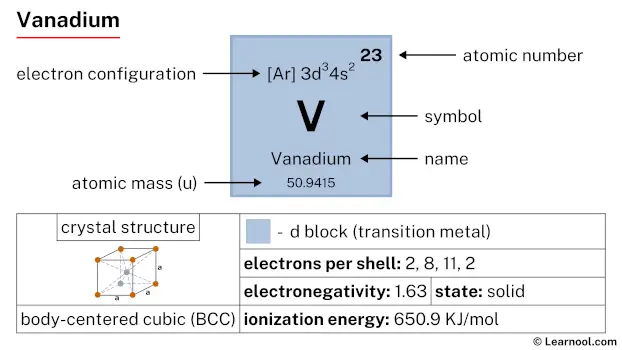 Vanadium |
24 Cr 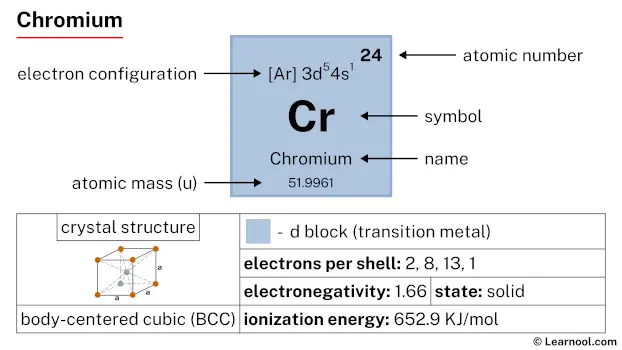 Chromium |
25 Mn 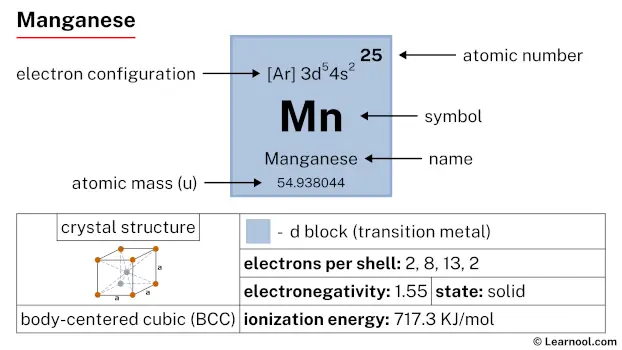 Manganese |
26 Fe 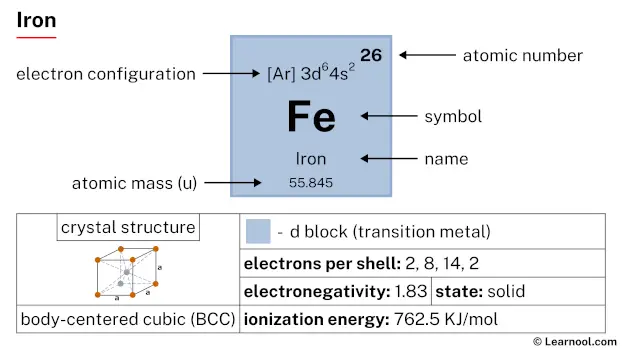 Iron |
27 Co 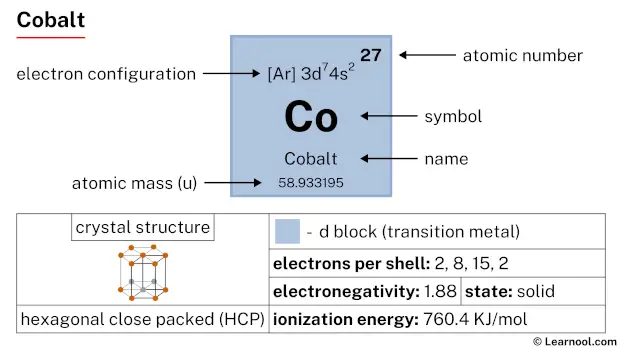 Cobalt |
28 Ni 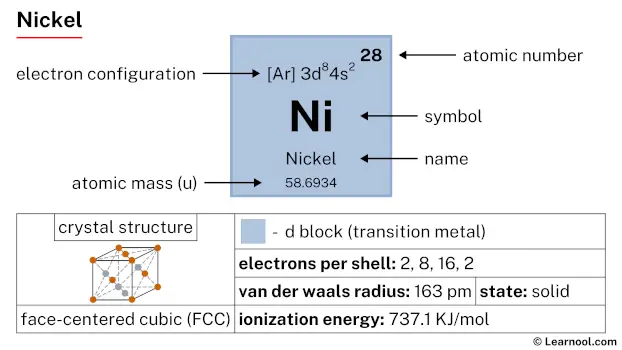 Nickel |
29 Cu 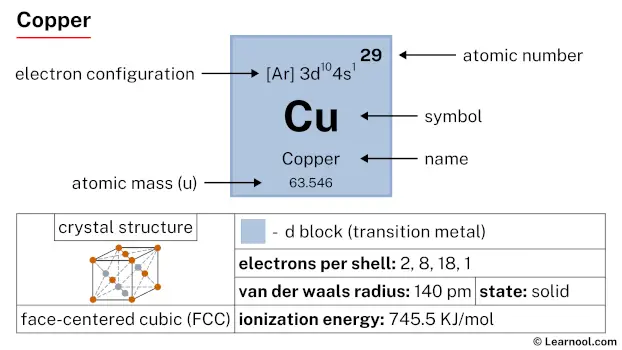 Copper |
30 Zn  Zinc |
31 Ga 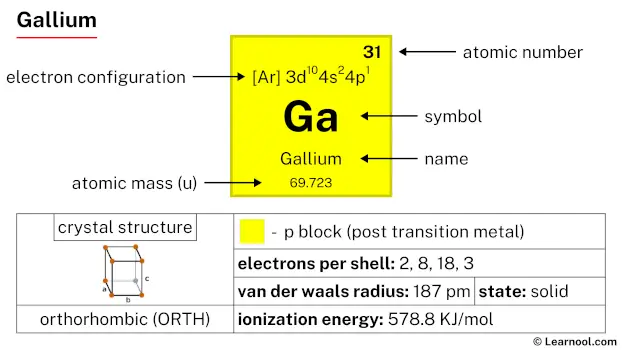 Gallium |
32 Ge 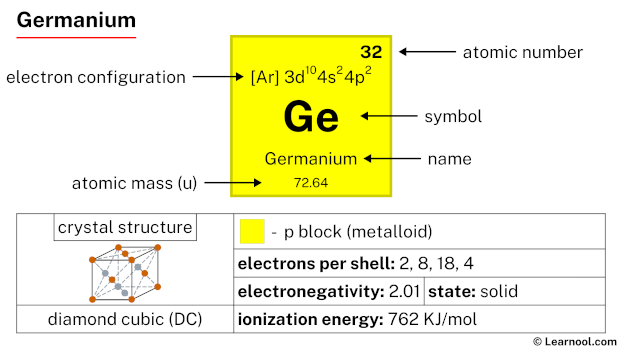 Germanium |
33 As 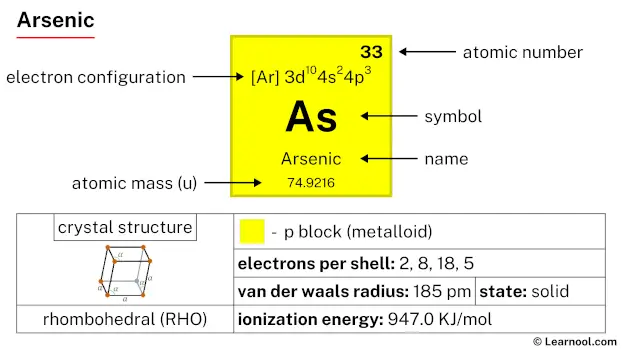 Arsenic |
34 Se 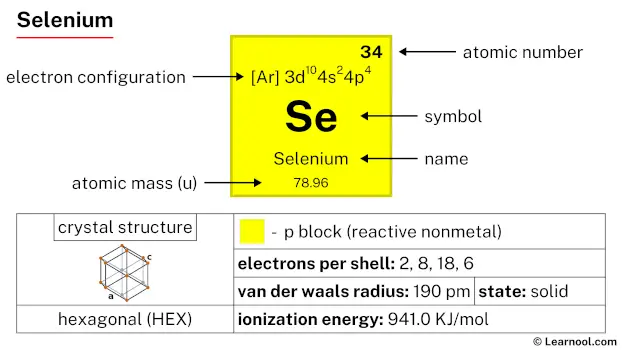 Selenium |
35 Br 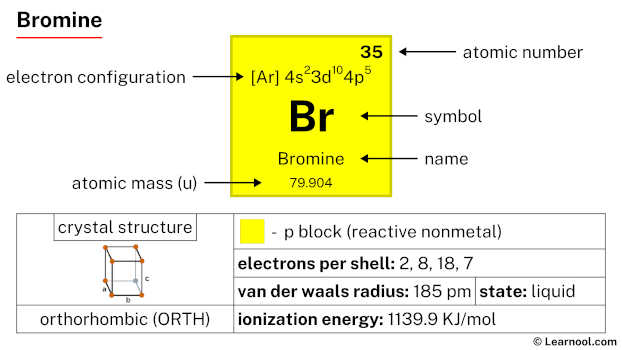 Bromine |
36 Kr  Krypton |
|
| 5 | 37 Rb 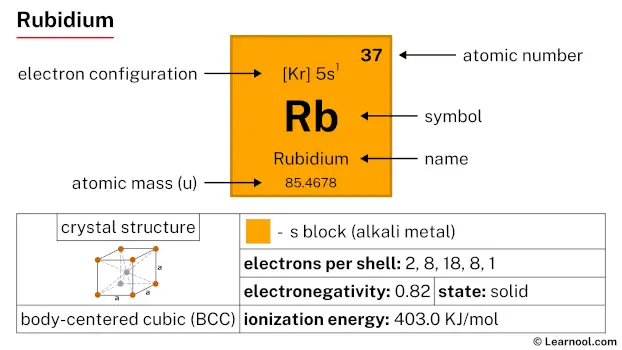 Rubidium |
38 Sr 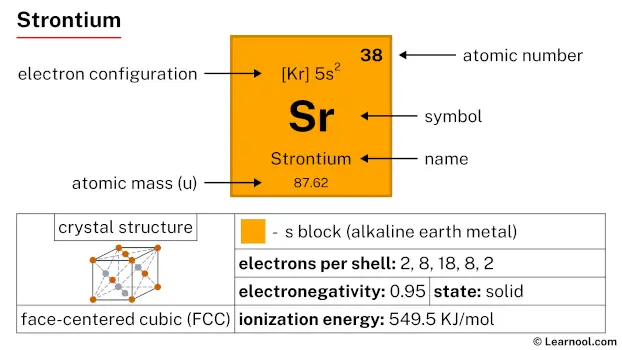 Strontium |
39 Y 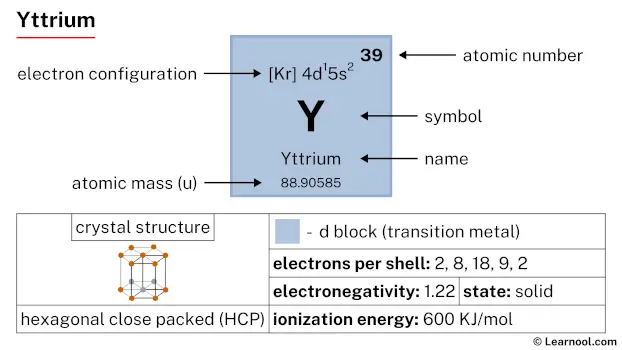 Yttrium |
40 Zr 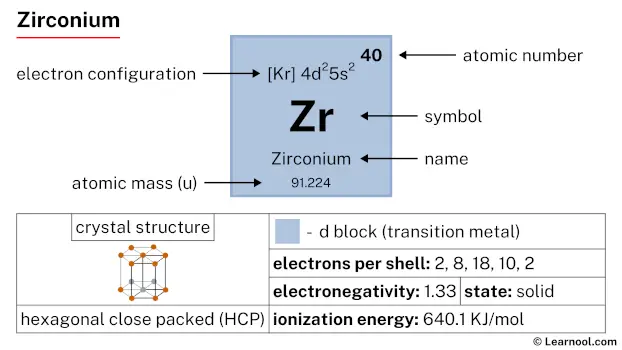 Zirconium |
41 Nb 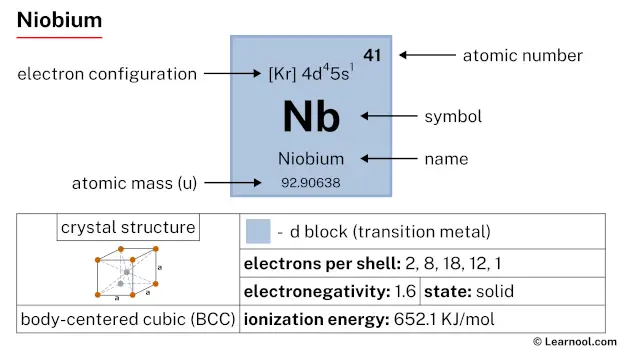 Niobium |
42 Mo 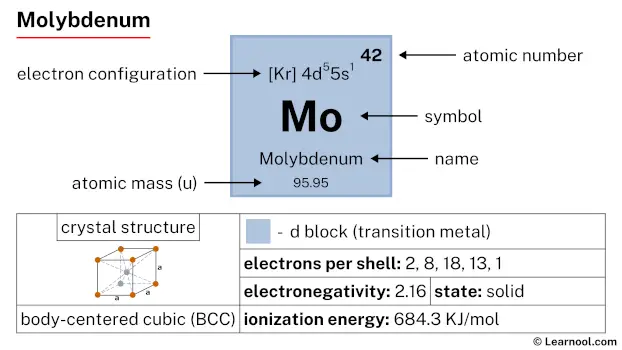 Molybdenum |
43 Tc 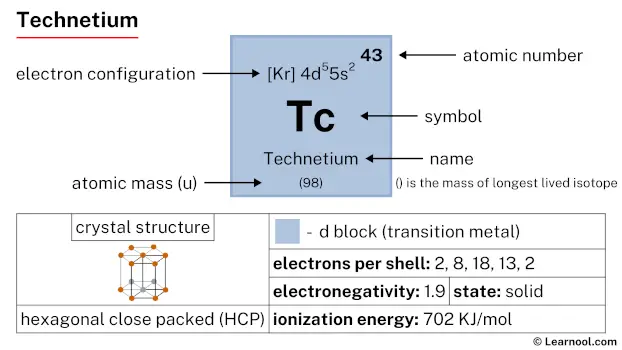 Technetium |
44 Ru 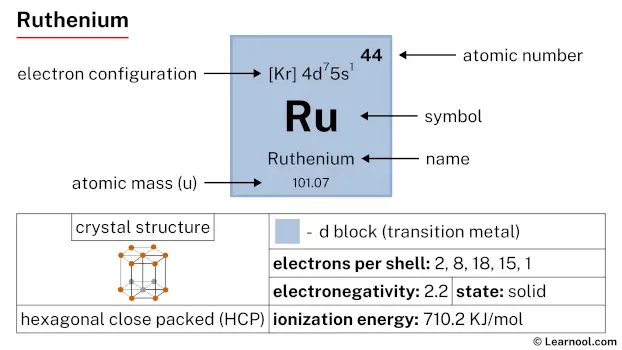 Ruthenium |
45 Rh 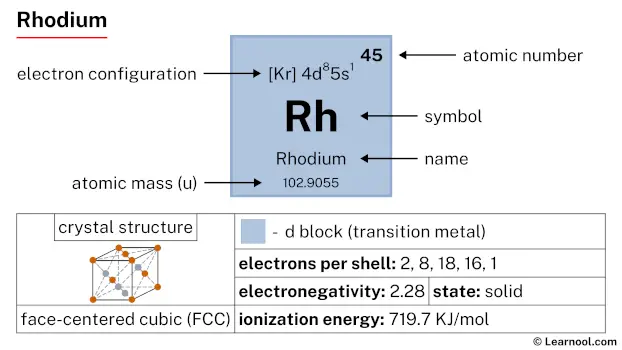 Rhodium |
46 Pd  Palladium |
47 Ag  Silver |
48 Cd 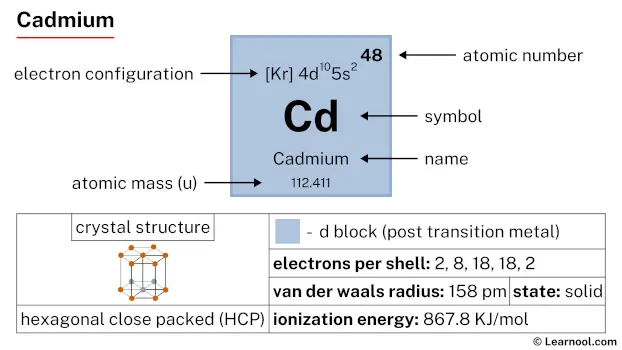 Cadmium |
49 In 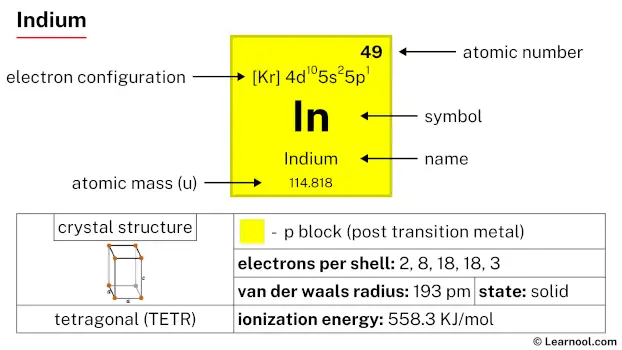 Indium |
50 Sn 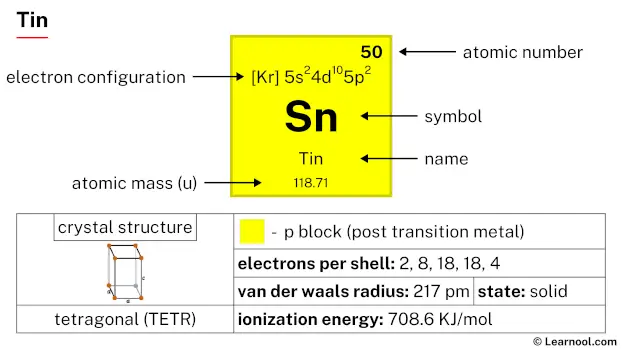 Tin |
51 Sb 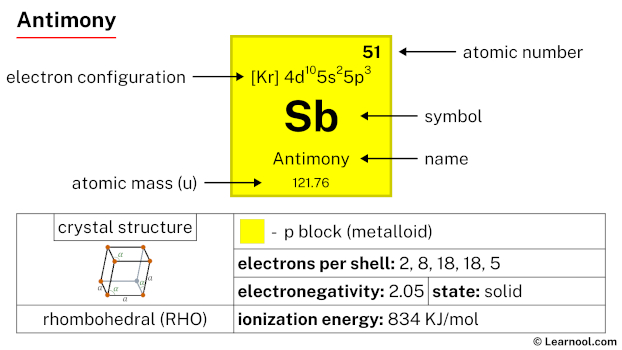 Antimony |
52 Te 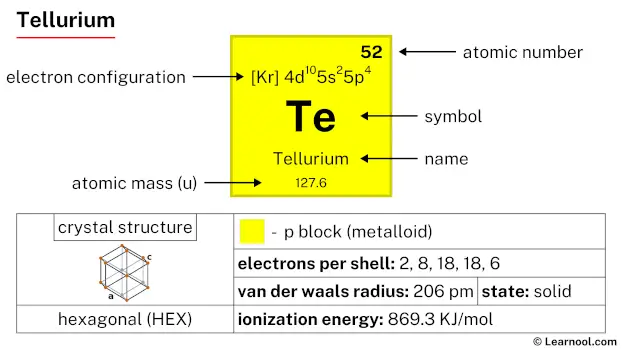 Tellurium |
53 I 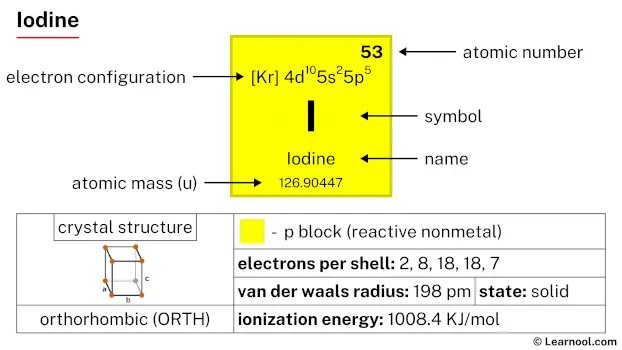 Iodine |
54 Xe 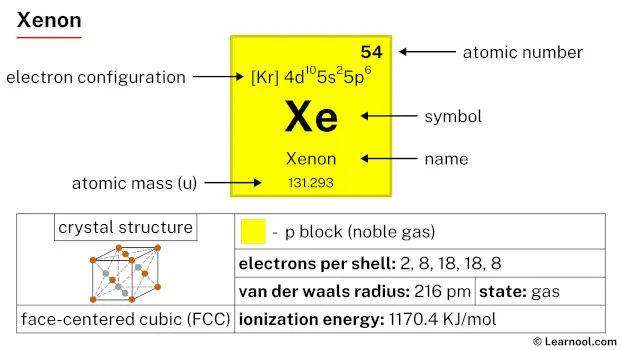 Xenon |
|
| 6 | 55 Cs 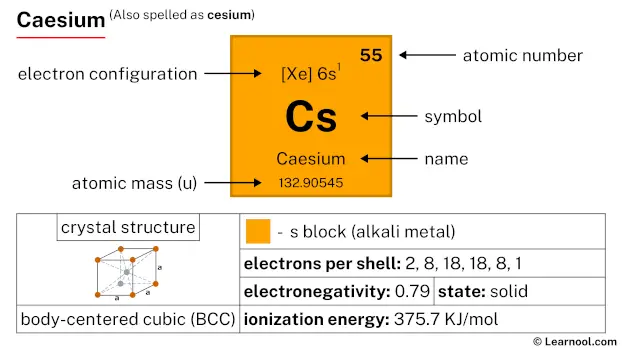 Caesium |
56 Ba 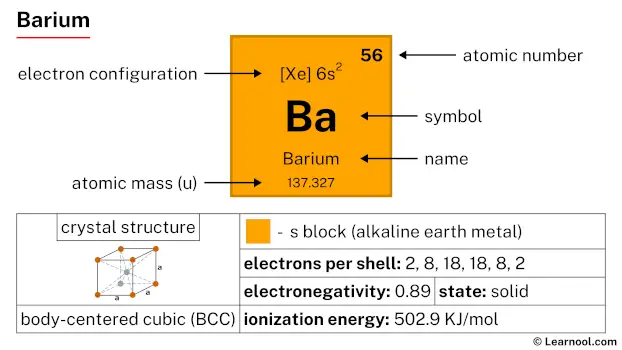 Barium |
72 Hf 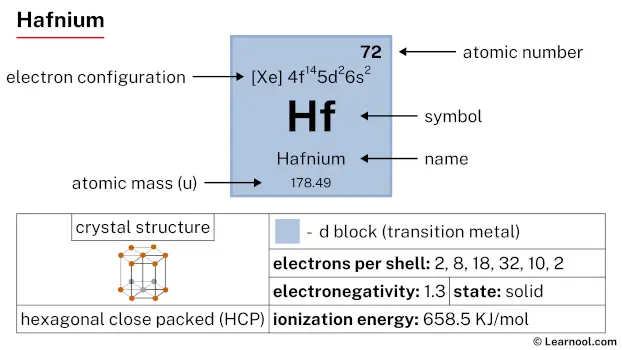 Hafnium |
73 Ta 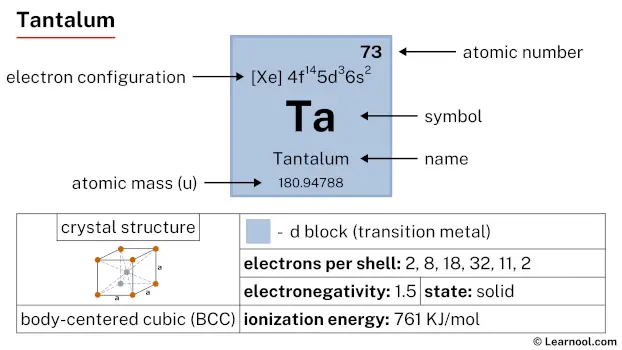 Tantalum |
74 W 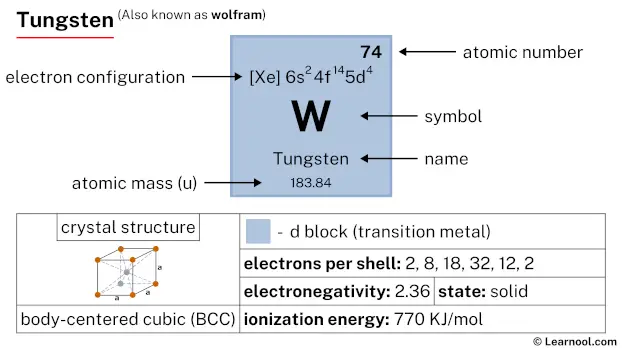 Tungsten |
75 Re Rhenium |
76 Os 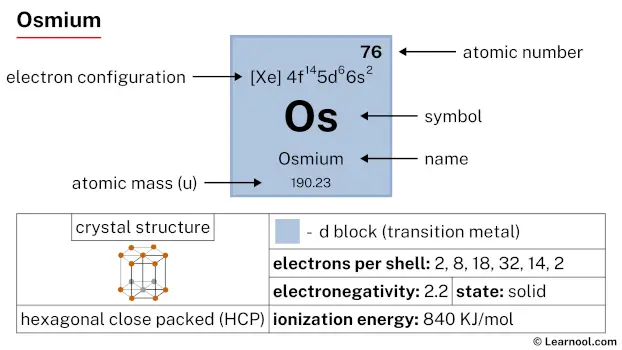 Osmium |
77 Ir 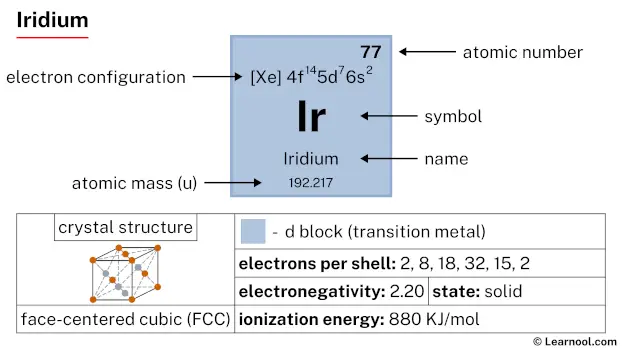 Iridium |
78 Pt  Platinum |
79 Au  Gold |
80 Hg 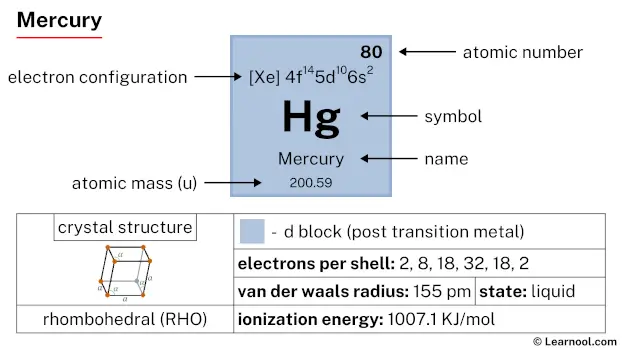 Mercury |
81 Tl 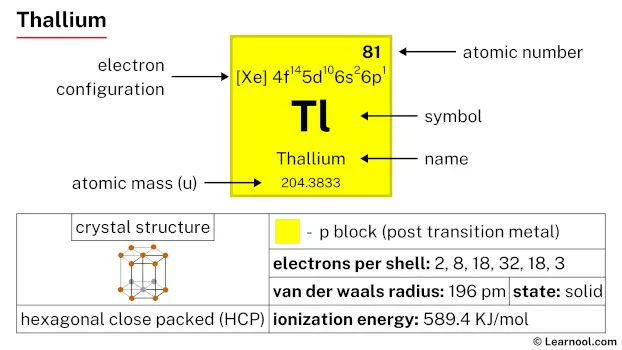 Thallium |
82 Pb  Lead |
83 Bi 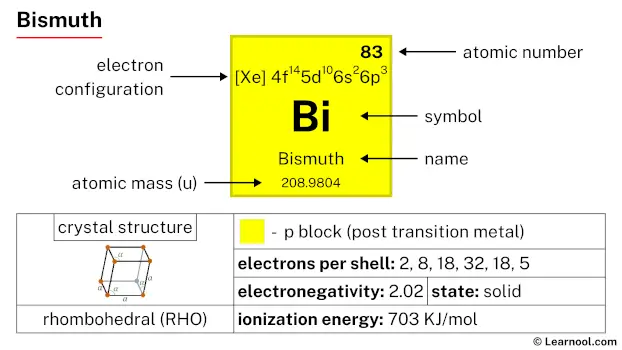 Bismuth |
84 Po 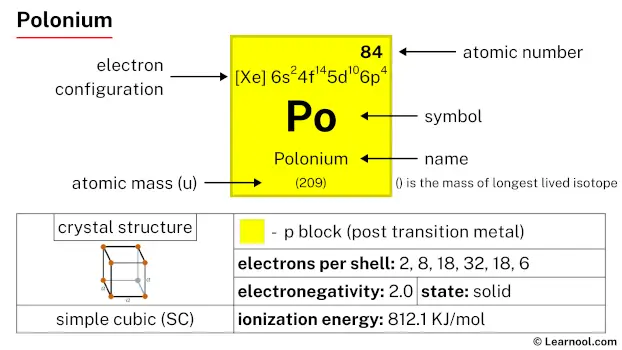 Polonium |
85 At 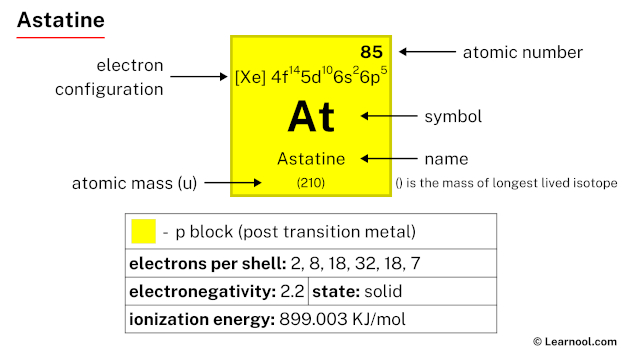 Astatine |
86 Rn 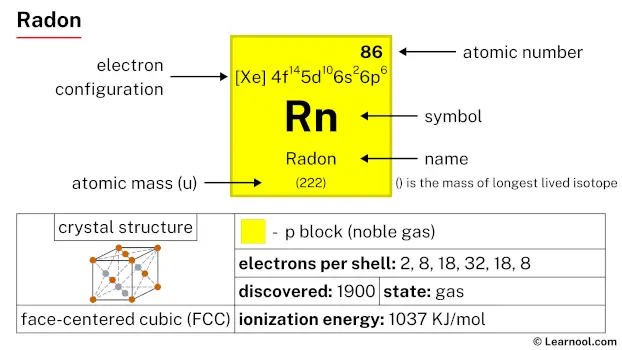 Radon |
||
| 7 | 87 Fr 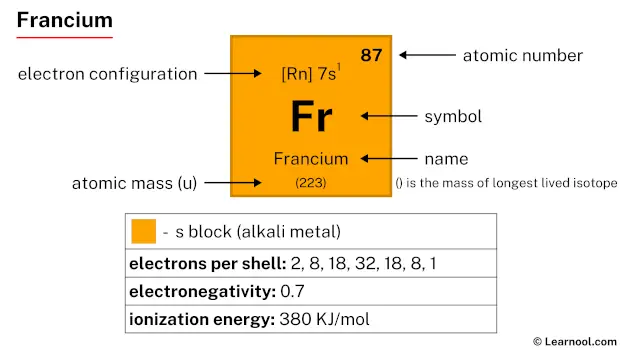 Francium |
88 Ra 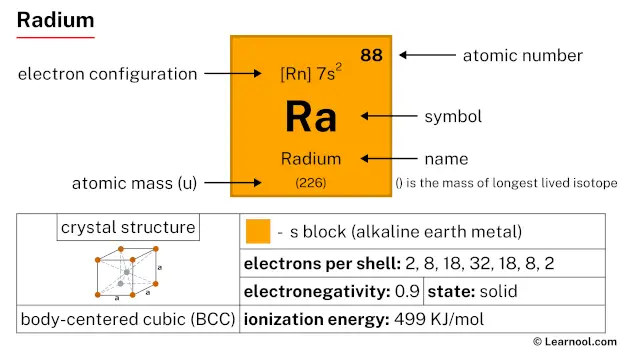 Radium |
104 Rf 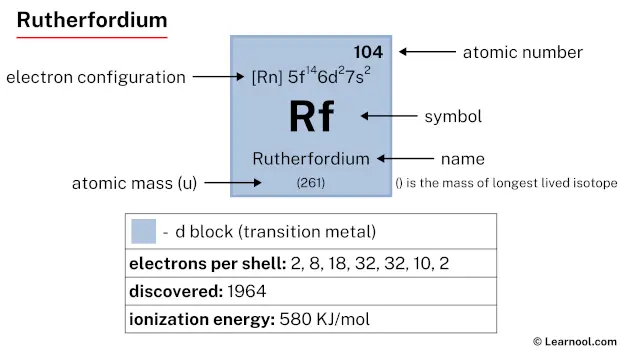 Rutherfordium |
105 Db 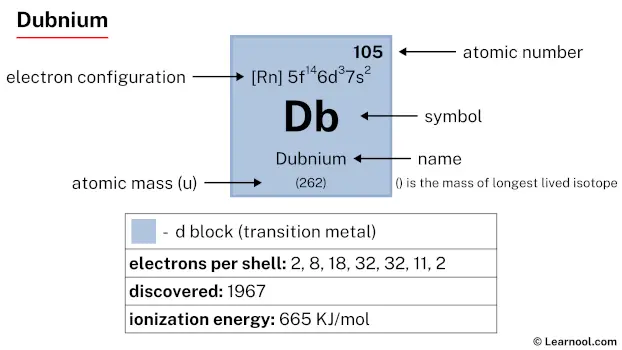 Dubnium |
106 Sg 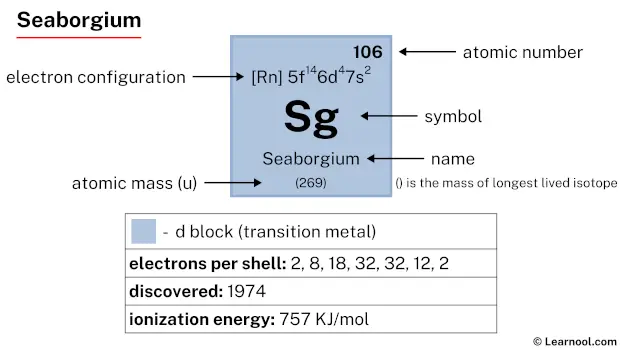 Seaborgium |
107 Bh 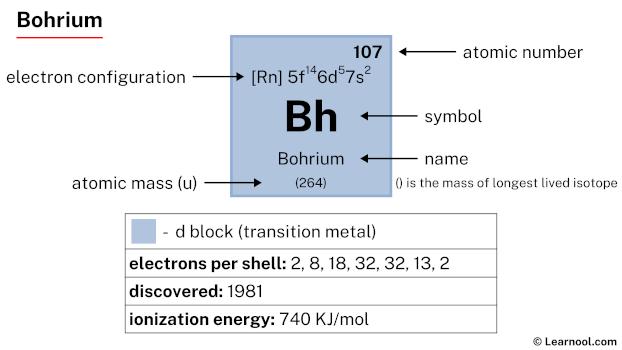 Bohrium |
108 Hs 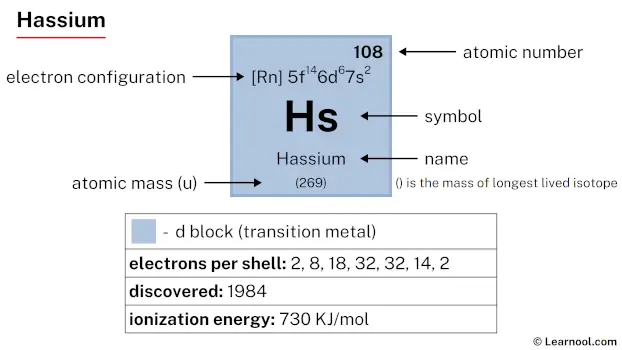 Hassium |
109 Mt 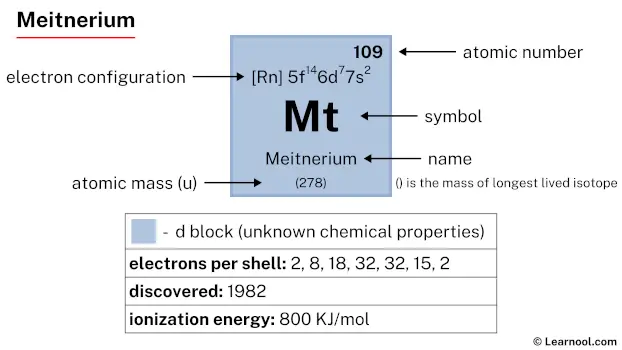 Meitnerium |
110 Ds 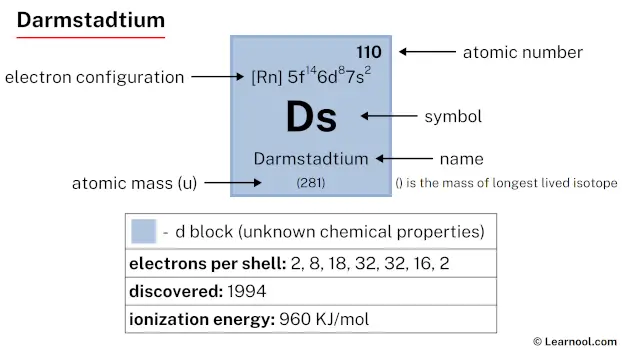 Darmstadtium |
111 Rg 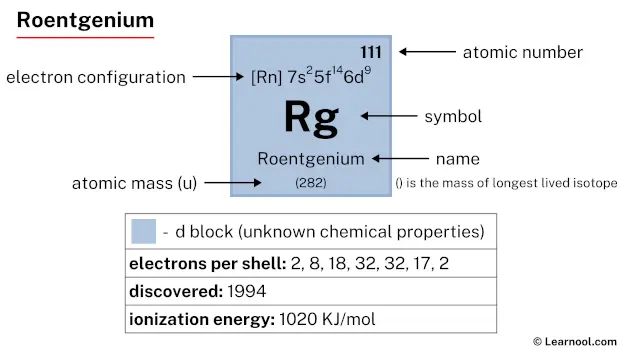 Roentgenium |
112 Cn  Copernicium |
113 Nh 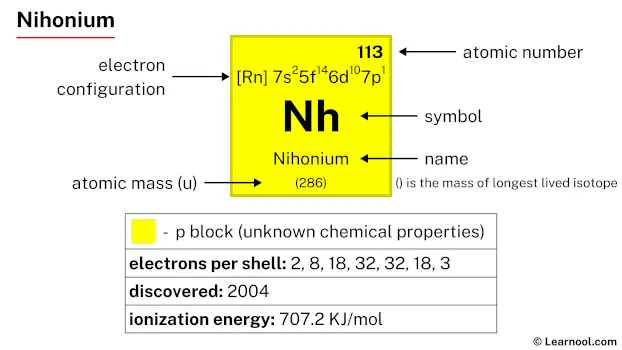 Nihonium |
114 Fl 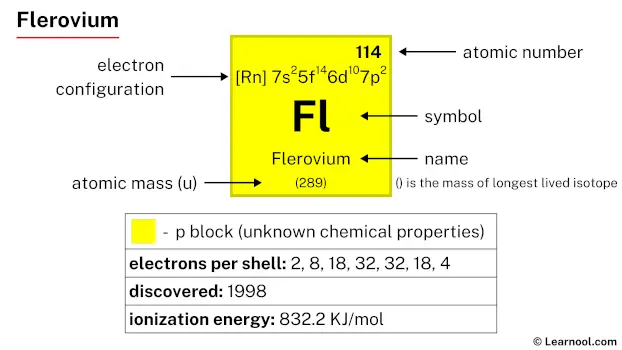 Flerovium |
115 Mc 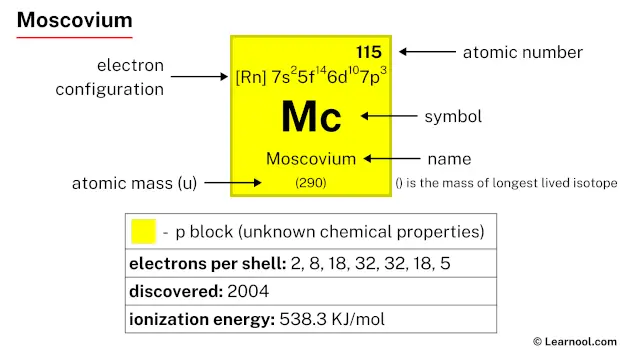 Moscovium |
116 Lv 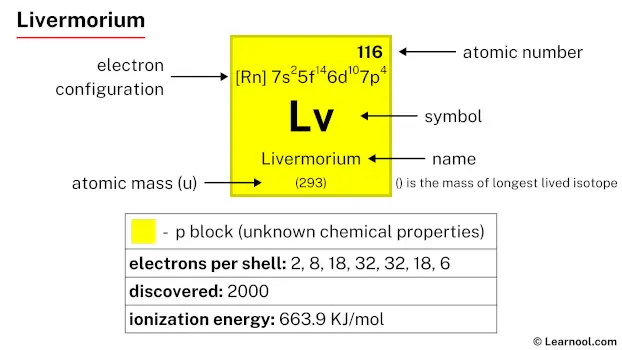 Livermorium |
117 Ts 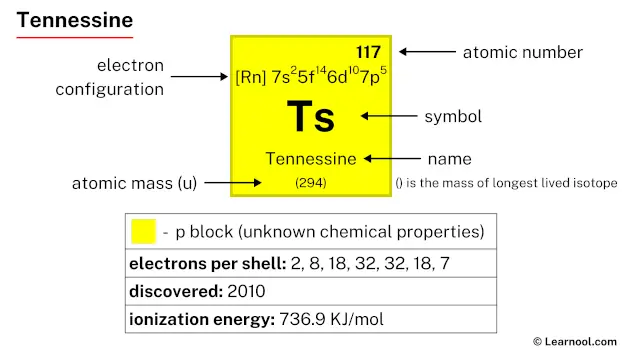 Tennessine |
118 Og 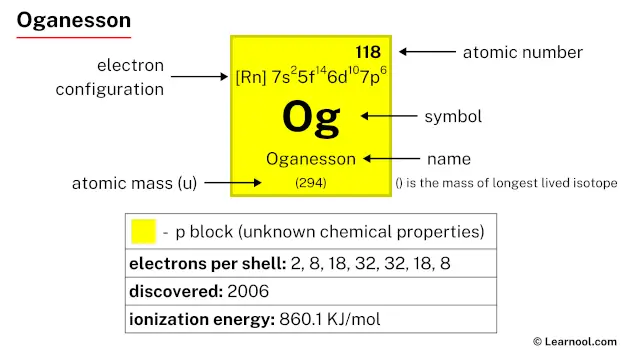 Oganesson |
||
| 57 La 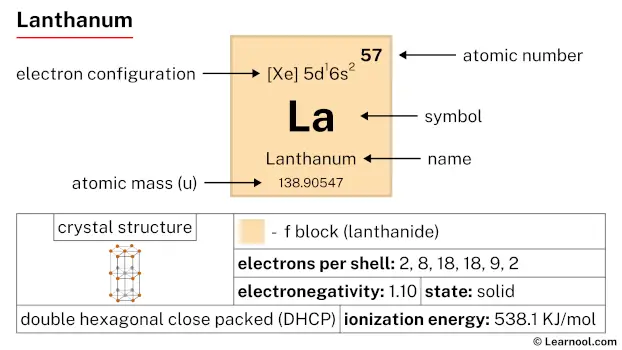 Lanthanum |
58 Ce 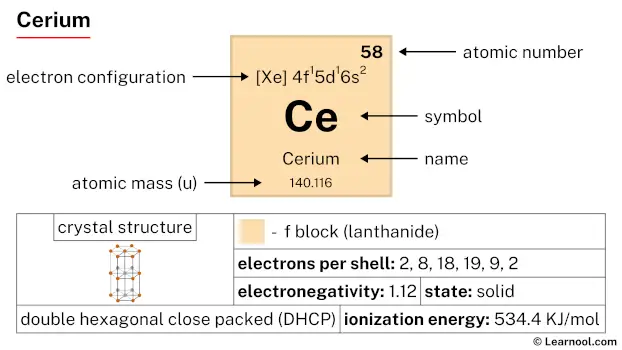 Cerium |
59 Pr 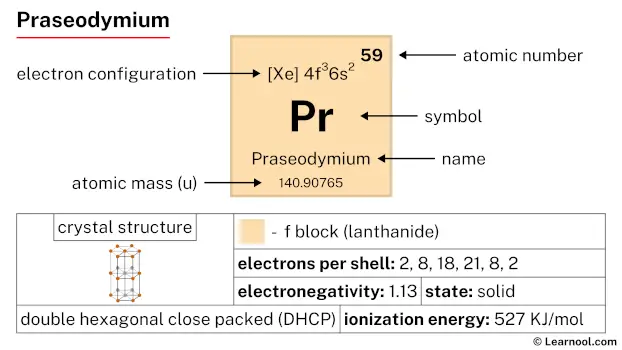 Praseodymium |
60 Nd 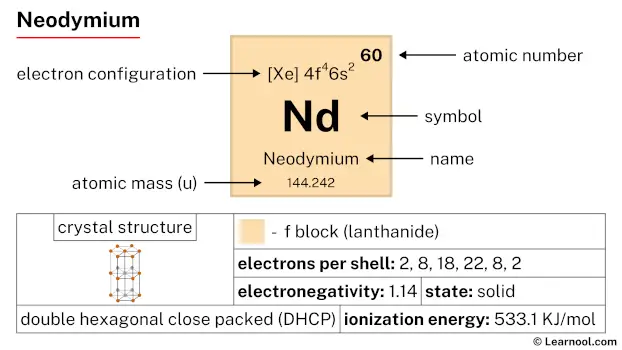 Neodymium |
61 Pm 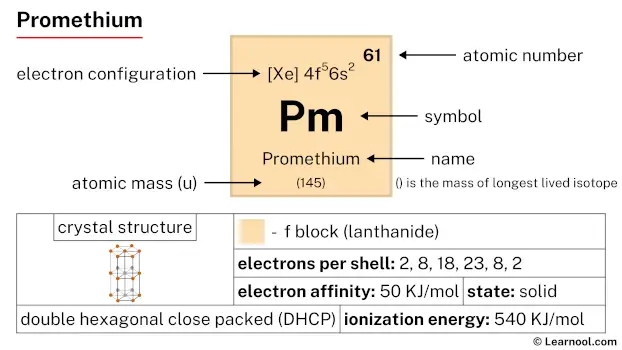 Promethium |
62 Sm 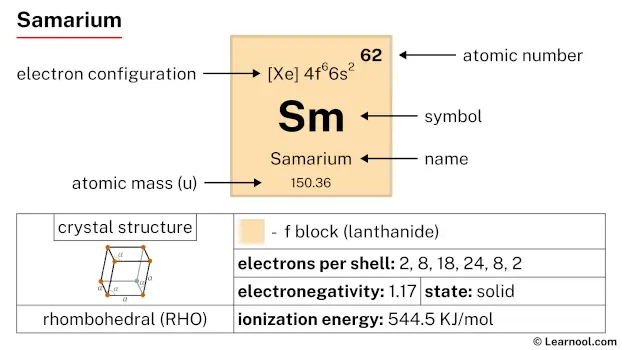 Samarium |
63 Eu 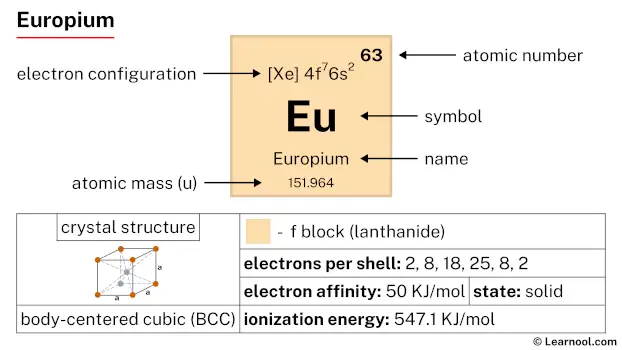 Europium |
64 Gd 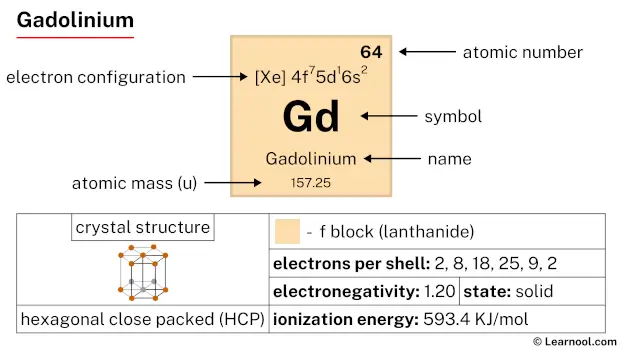 Gadolinium |
65 Tb 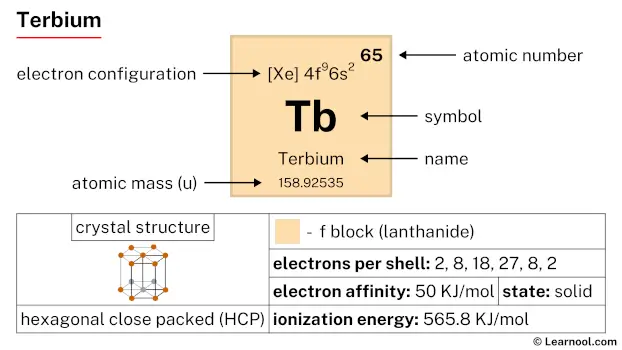 Terbium |
66 Dy 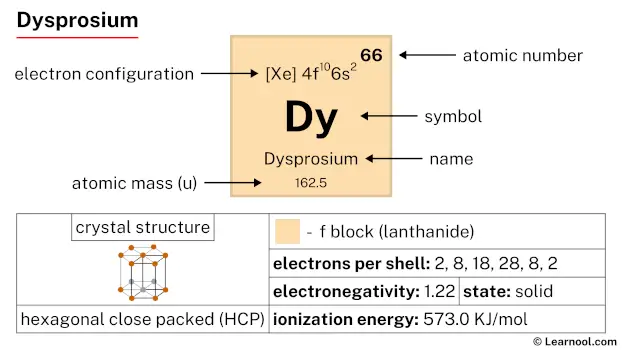 Dysprosium |
67 Ho 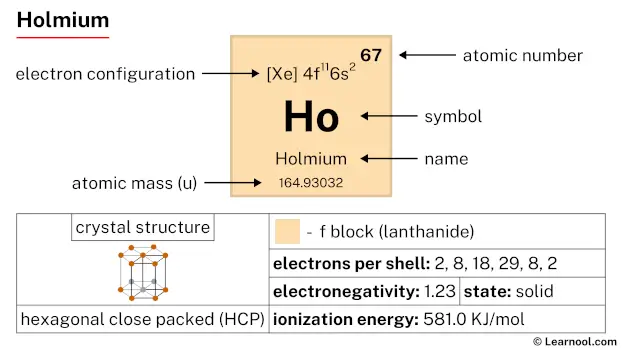 Holmium |
68 Er 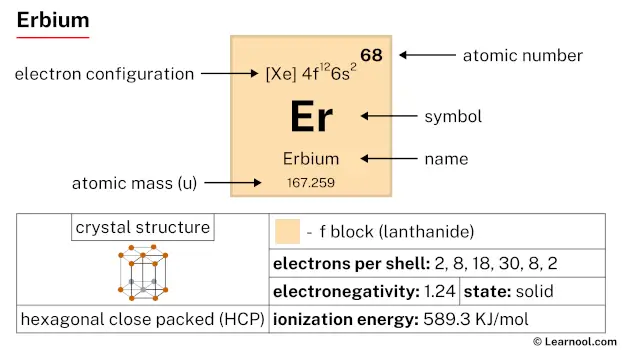 Erbium |
69 Tm 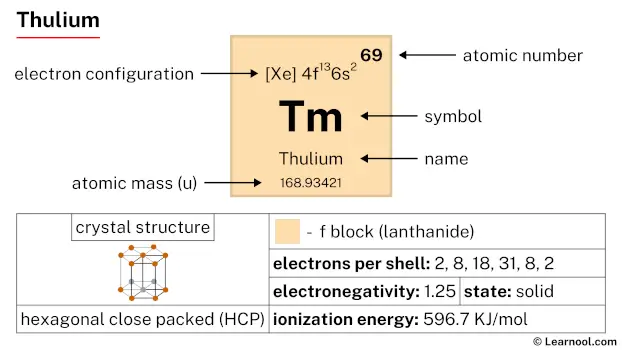 Thulium |
70 Yb 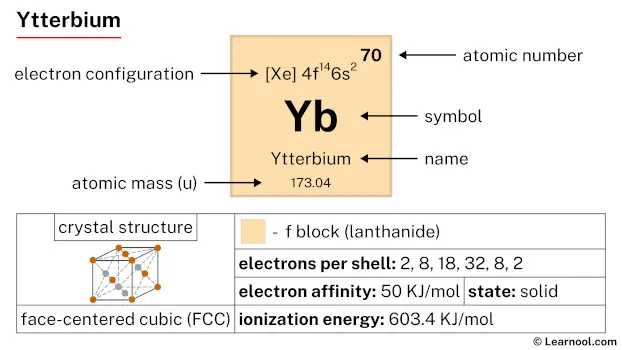 Ytterbium |
71 Lu 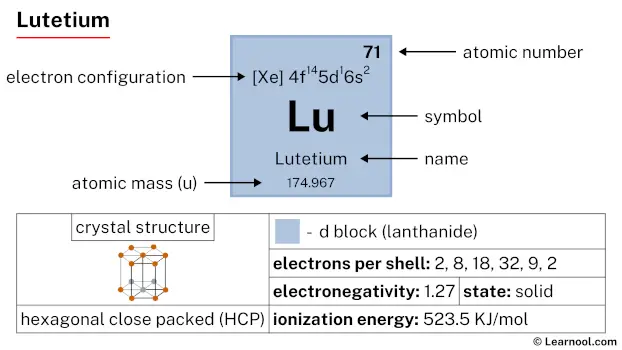 Lutetium |
|||||
| 89 Ac 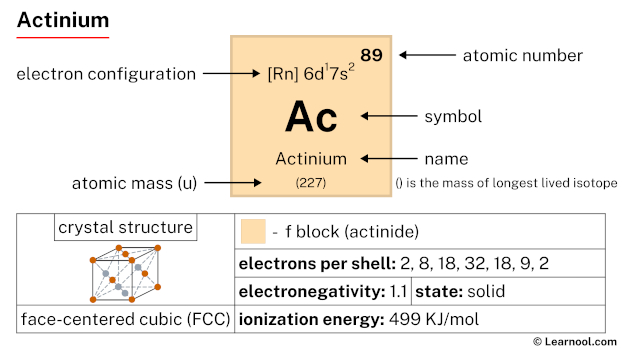 Actinium |
90 Th 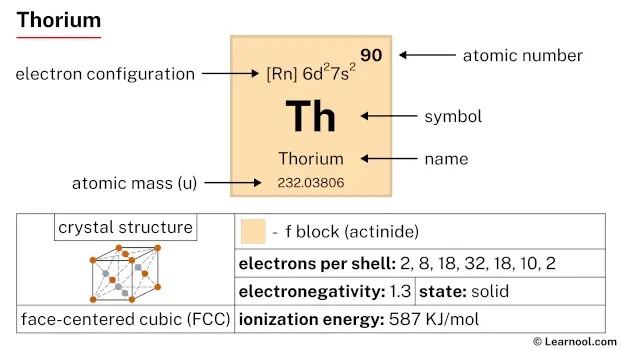 Thorium |
91 Pa 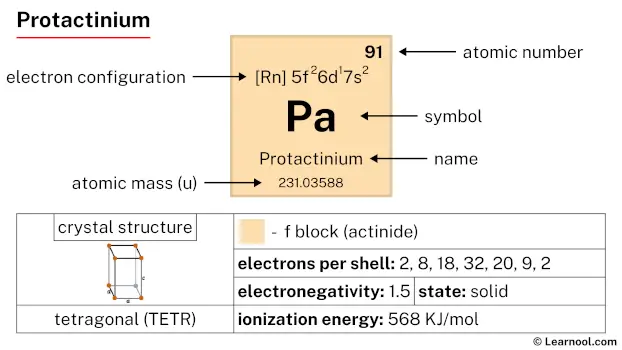 Protactinium |
92 U 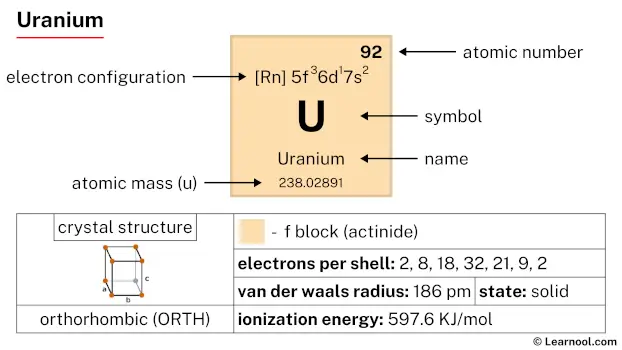 Uranium |
93 Np 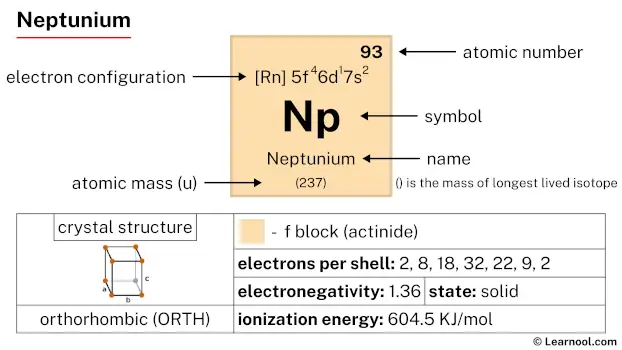 Neptunium |
94 Pu 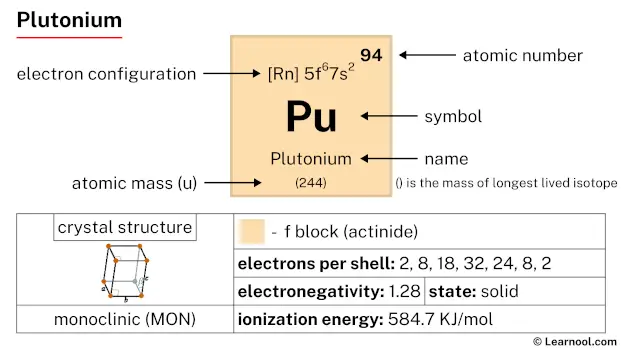 Plutonium |
95 Am  Americium |
96 Cm 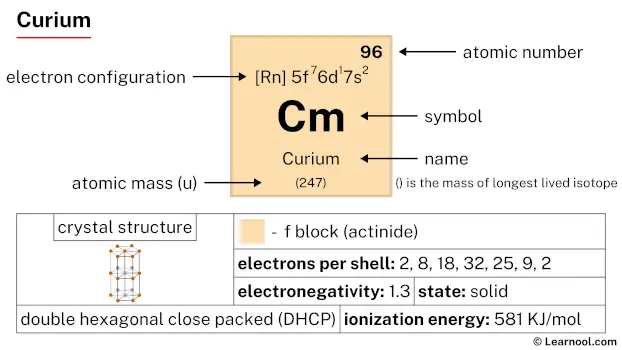 Curium |
97 Bk 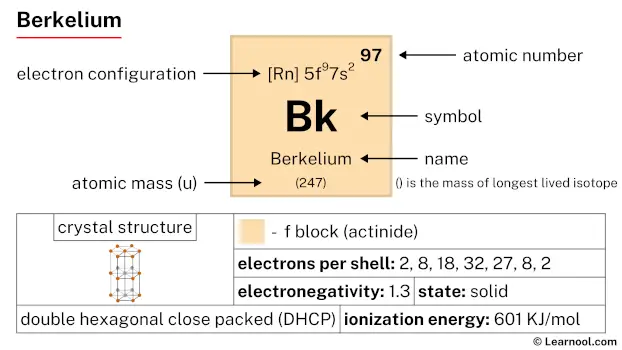 Berkelium |
98 Cf 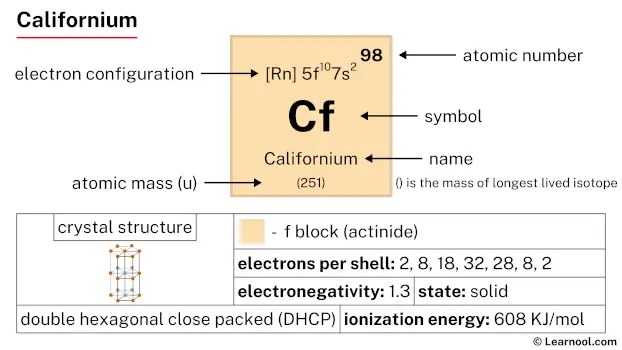 Californium |
99 Es 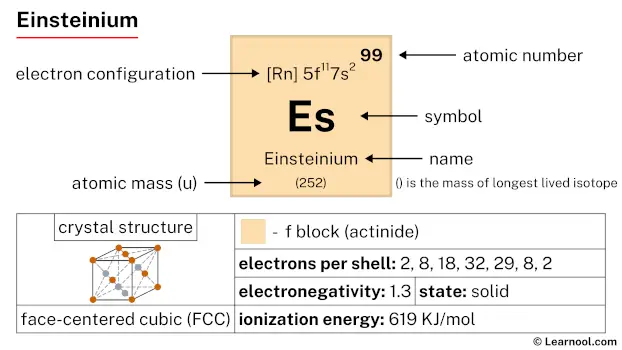 Einsteinium |
100 Fm 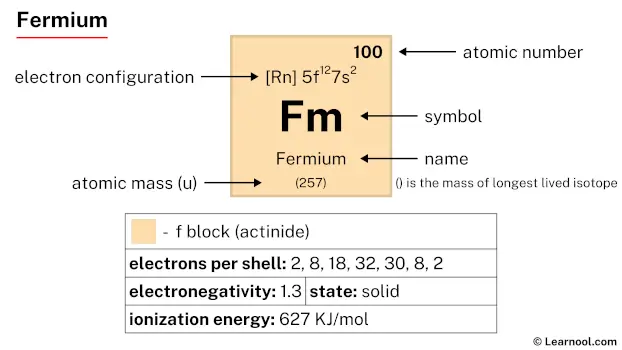 Fermium |
101 Md 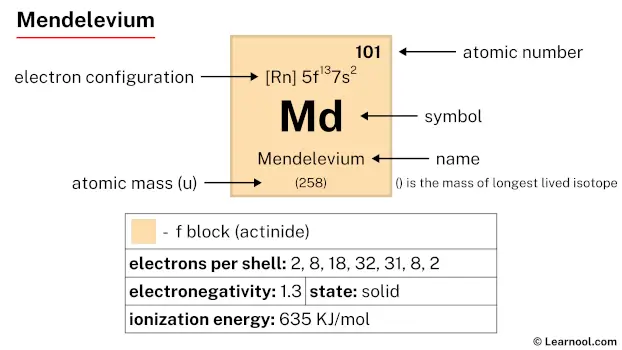 Mendelevium |
102 No 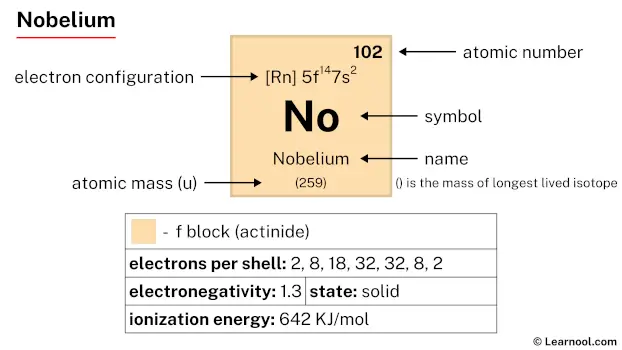 Nobelium |
103 Lr 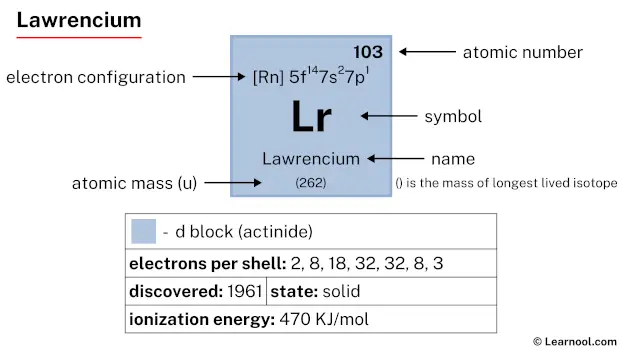 Lawrencium |
|||||
| – d block |
Rhenium is a d-block element, situated in the seventh column and the sixth row of the periodic table. Its atomic number is 75 and its symbol is Re.
Element information
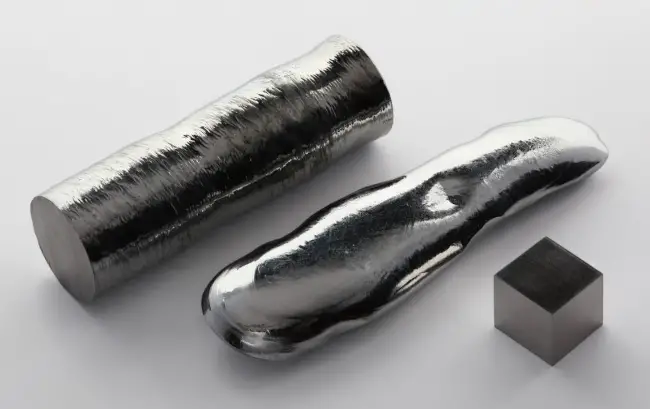 |
|
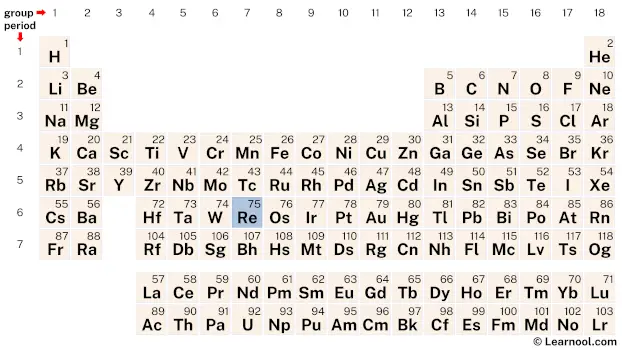 |
|
| Origin of name | Latin word “Rhenus” (which means Rhine) |
| Symbol | Re |
| Atomic number (Z) | 75 |
| Atomic mass | 186.207 u |
| Block | d-block |
| Group | 7 |
| Period | 6 |
| Classification | Transition metal |
| Atomic radius | 137 pm |
| Covalent radius | 151±7 pm |
| Melting point | 3186 ℃, 5767 ℉, 3459 K |
| Boiling point | 5630 ℃, 10,170 ℉, 5903 K |
| Electron configuration | [Xe] 4f14 5d5 6s2 |
| Learn how to write: Rhenium electron configuration | |
| Electrons per shell | 2, 8, 18, 32, 13, 2 |
| Crystal structure | Hexagonal close-packed (hcp) |
| Phase at r.t | Solid |
| Density near r.t | 21.02 g/cm3 |
| Main isotopes | Rhenium-185 |
| Natural occurrence | Primordial |
| Oxidation state | +4, +7 |
| Electronegativity (Pauling scale) | 1.9 |
| Protons Neutrons Electrons |
75 111 75 |
| Learn how to find: Rhenium protons neutrons electrons | |
| CAS number | 7440-15-5 |
| Discovered by | Walter Noddack, Ida Noddack, and Otto Berg in 1925 |
History
Rhenium, which is named after the Rhine River in Europe, was the last naturally occurring element to be discovered with a stable isotope. The existence of an undiscovered element at its position on the periodic table had been predicted by Dmitri Mendeleev and Henry Moseley. In 1908, Japanese chemist Masataka Ogawa claimed to have discovered the 43rd element and named it nipponium after Japan. However, recent analysis indicated that the element Ogawa discovered was actually rhenium, not nipponium.
The discovery of rhenium is credited to Walter Noddack, Ida Noddack, and Otto Berg, who were German chemists. In 1925, they reported detecting the element in platinum ore and the mineral columbite. They also found rhenium in gadolinite and molybdenite. It wasn’t until 1928 that they were able to extract 1 gram of rhenium from 660 kg of molybdenite.
In 1968, it was estimated that 75% of the rhenium metal in the United States was used for research and the development of refractory metal alloys. It took several years before these superalloys became widely used. Today, rhenium is still primarily used in high-temperature applications such as jet engines and gas turbine blades. It is also used in electrical contacts, X-ray tubes, and filaments for mass spectrographs. Rhenium is a rare and expensive element, with global reserves estimated to be less than 50,000 metric tons.
Occurrence and production
Rhenium is a rare element with a low abundance in the Earth’s crust, estimated to be about 1 part per billion by weight. The element is found in small amounts in various minerals, including molybdenite, gadolinite, and columbite. It is also present in certain copper and nickel ores. The primary commercial source of rhenium is as a by-product of the extraction and refining of molybdenum and copper ores.
Rhenium is obtained through several extraction and purification steps. First, the molybdenite or copper concentrate is roasted to form molybdenum oxide or copper oxide. The oxide is then treated with hydrogen gas to form a crude powder of rhenium and molybdenum or copper. This powder is then further refined using various chemical and physical methods, such as solvent extraction, ion exchange, and distillation, to isolate the rhenium from the other metals. The resulting product is a highly pure rhenium metal powder or pellets.
Properties
Rhenium is a silvery-white, heavy, and dense metal that has a high melting point of 3186 ℃ and a boiling point of 5630 ℃, making it one of the highest melting metals.
It has a high density of 21.02 g/cm3, making it denser than most other metals.
Rhenium has a very low vapor pressure, which makes it resistant to heat and corrosion. It is also highly resistant to wear and tear and can withstand extreme environments, such as those found in jet engines.
It has a very high modulus of elasticity, which makes it an excellent material for springs and other applications that require high strength and elasticity.
Rhenium has the second highest melting point of all elements after tungsten and is one of the most heat-resistant elements known.
It has a very high electrical conductivity and is used in electronic components and electrical contacts.
Rhenium is a rare and expensive metal and is often used as an alloying element with other metals to improve their properties, such as in superalloys for turbine blades and in filaments for mass spectrometry.
Applications
Superalloys
Rhenium is a key component of superalloys used in high-temperature applications, such as jet engines and gas turbine blades. It increases the alloy’s strength, ductility, and resistance to creep at high temperatures.
Catalysts
Rhenium is used as a catalyst in the petroleum industry to convert long-chain hydrocarbons into gasoline and other high-value products. It is also used in the production of fertilizers, plastics, and other chemicals.
Electrical contacts
Rhenium is used in electrical contacts because of its high melting point, good electrical conductivity, and resistance to corrosion. It is used in high-performance switches, circuit breakers, and other electrical equipment.
X-ray tubes
Rhenium is used as a target material in X-ray tubes because of its high atomic number and low vapor pressure. It produces a high-quality X-ray beam that is useful in medical and industrial applications.
Nuclear industry
Rhenium is used in the nuclear industry as a neutron reflector in nuclear reactors. It is also used in the production of radioactive isotopes for medical imaging and cancer treatment.
Thermocouples
Rhenium is used in thermocouples, which are devices that convert temperature differences into electrical signals. Rhenium alloys with tungsten are used for high-temperature thermocouples, such as those used in gas turbines and jet engines.
Interesting facts
Rhenium has the highest boiling point of any element at 5630 ℃ and is one of the most heat-resistant metals known to man.
It was the last naturally occurring element to be discovered and was named after the river Rhine.
Rhenium is one of the densest elements and has a very high modulus of elasticity, making it ideal for use in aerospace and high-performance applications.
It has a unique ability to form superalloys with other metals, such as nickel and cobalt, which can withstand high temperatures and are used in jet engine components and other applications that require extreme heat resistance.
Rhenium is also used in X-ray imaging equipment, as a catalyst in the chemical industry, and in electrical contacts.
It is a rare element, with an abundance of only 1 part per billion in the earth’s crust.
Rhenium has several isotopes, including one that is used in radiopharmaceuticals for medical imaging and cancer treatment.
Related
More elements
External links
- http://pubs.acs.org/cen/80th/rhenium.html
- https://www.rsc.org/periodic-table/element/75/rhenium
- https://en.wikipedia.org/wiki/Rhenium
- https://www.britannica.com/science/rhenium
- https://www.chemicool.com/elements/rhenium.html
- https://pubchem.ncbi.nlm.nih.gov/element/Rhenium
- https://education.jlab.org/itselemental/ele075.html
- https://www.radiochemistry.org/periodictable/elements/75.html
Deep
Learnool.com was founded by Deep Rana, who is a mechanical engineer by profession and a blogger by passion. He has a good conceptual knowledge on different educational topics and he provides the same on this website. He loves to learn something new everyday and believes that the best utilization of free time is developing a new skill.
